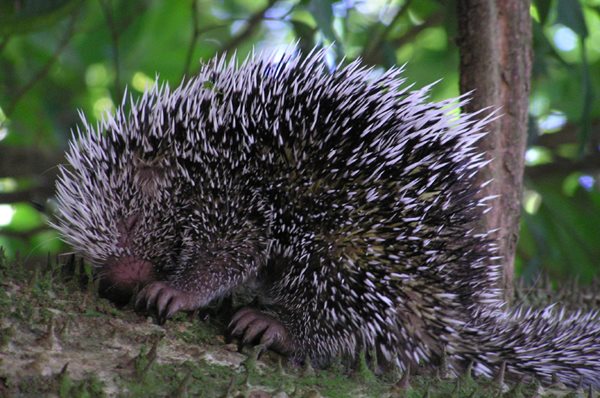Physical Description & Traits
Known for their built-in defense mechanism, porcupines are easily recognized. The long, pointed quills that cover their backs render the animals unapproachable to predators and afford them a relatively long lifespan of five to seven years. Usually brown in color, their bodies are two to three feet long, not including the additional eight to 10 inches of their tails. Their heads are somewhat groundhog-like, with sloping snouts that descend smoothly from the forehead. Even with their distinctive appearance, porcupines can sometimes look like and be mistaken for hedgehogs.

Common Habitats
Porcupines are found in a variety of climates and terrains, including deserts, rainforests, mountain ranges, forests, and grasslands. Surprisingly, they are excellent climbers and build dens in tree branches, tangled roots, caves, old logs, or burrows. As herbivores, they eat leaves, grass, nuts, tree bark, and plant buds, though a porcupine will occasionally gnaw on bones to keep its teeth sharp.
Problems Caused by Porcupines
Most porcupines will patrol and defend their feeding grounds by night. If this includes a heavily wooded residential lot, circumstances are ripe for an unpleasant encounter between humans or pets and the spiny pests. Dogs often become overly curious and end up with quills sticking out of their noses. Removal is painful and can lead to infection. Additionally, porcupines’ propensity for feeding on timber can damage tree limbs so badly that regrowth becomes twisted and disfigured. The spooky-looking trees that result are called witch trees. To keep your property free from porcupine infestations, contact the wildlife removal professionals at Critter Control.
Porcupine Pictures
